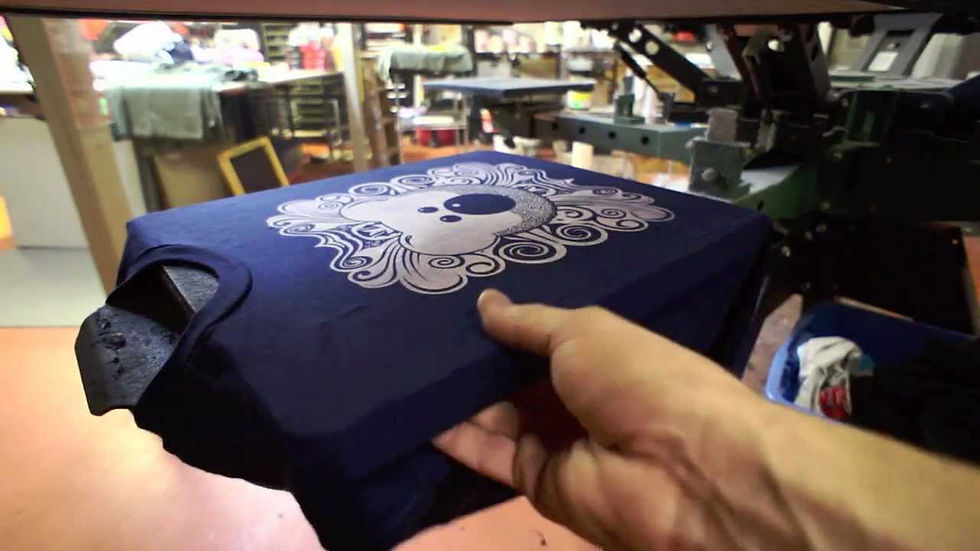Which is Better? Plastisol Ink or Water Based Ink.
- Printiful.net

- Jan 15, 2019
- 3 min read

In the world of screen printing, there are two primary ink types: water-based and plastisol. The type of ink that you choose for a project depends on lots of factors, like the type of material you’re printing on or the feel of the design you want. For those just getting started with screen printing, here are some of the basic differences between water-based and plastisol inks.
Water-based ink
Best used for: towels and thicker apparel
THE BASICS
Water-based ink is different than plastisol in exactly the way you might expect: plastisol does not use water as a solvent, while water-based ink does. Once printed, this kind of ink needs to evaporate in order for the ink to set (or “cure”). Water-based ink can either cure at room temperature over time, or by running through a dryer.
ADVANTAGES
Water-based inks have what’s called a “soft hand” once printed on material. This means that the ink cannot be easily felt when you run your hand over the design. Some people prefer water-based ink for t-shirts because they think it creates a more comfortable shirt. A shirt with too much of a “hard hand” design can feel heavy.
Water-based is best when printing on material that is 100% cotton because it reacts and adheres much better to cotton than a material like polyester. Water-based ink tries to change the cotton fibers to a new color. Cotton absorbs that ink, whereas synthetic materials (think of plastic) can't really absorb anything.
DISADVANTAGES
Water-based inks are more difficult to cure than plastisol and require a longer drying time. This adds to the production cost since plastisol takes less time to go from design to finished t-shirt.
Care must be taken to prevent water-based ink from drying out on the screen. This can be an inconvenience if you don’t finish printing your job by the end of the day, because you have to take down the screen to clean it and then set it all up again in the morning.
Once water-based ink is mixed, it has a much shorter shelf life than plastisol. On average, water-based inks will last for about a week once opened.
Plastisol ink
Best used for: t-shirts, sweatshirts, tote bags (we use it for pretty much everything)
THE BASICS
Plastisol ink is a PVC (polyvinyl chloride) based system which doesn’t use a water solvent. It’s a thermoplastic ink, meaning it has to be heated to a high enough temperature to cause the molecules of PVC resin and plasticizer to solidify (cure). The temperature at which plastisol usually cures on textiles is between 200-300 degrees F.
ADVANTAGES
Plastisol ink can be left out for long periods of time without drying out. This makes it a convenient choice for projects that could span multiple days.
It also usually works better when printing designs “wet-on-wet”, which is when you print a layer of ink on top of another one after it gets a quick flash dry. It takes less time than with water-based inks to flash dry each layer in between prints.
Plastisol is ready to use right out of the container. It comes in different strengths, from opaque colors to nearly transparent. Typically the more opaque colors are more expensive.
DISADVANTAGES
If plastisol prints are ironed, the design could melt or smear.
Plastisol ink leaves a heavier “hand” on shirt. This means the print is slightly raised from the material, and can be felt more than a water-based ink.
So there you have it: the main differences between water-based and plastisol ink. As you may have guessed, we prefer plastisol. For our projects it is the cheaper and more efficient choice, and we love the option of leaving the ink out after it's been opened to keep using the same color for future projects.




Commentaires